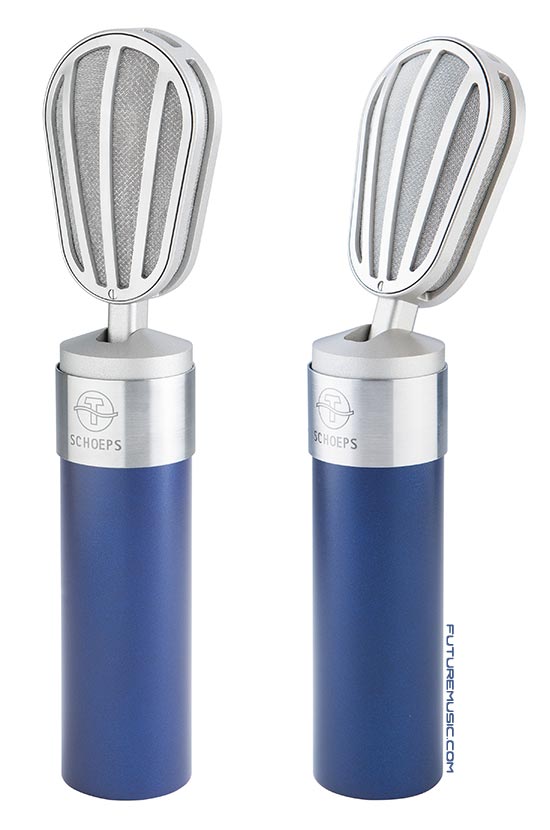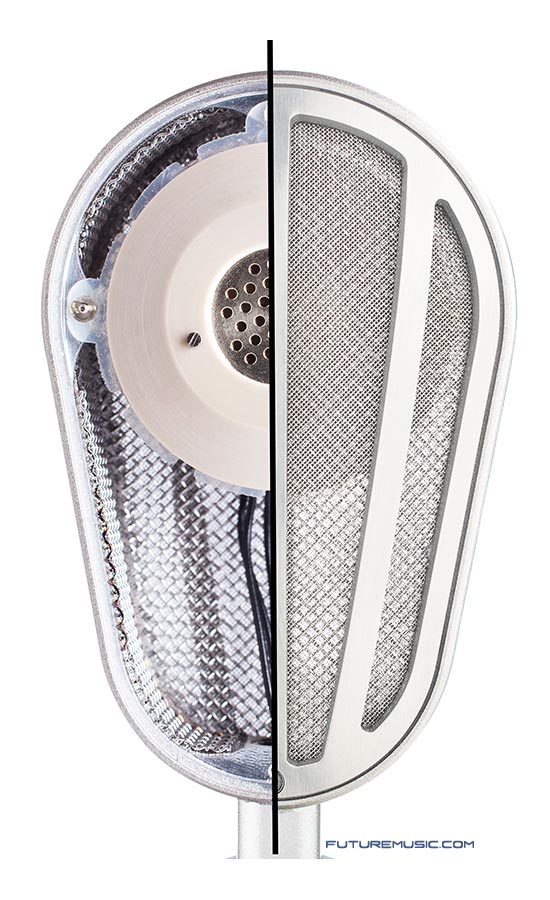Schoeps Releases V4 U Vocal Microphone
Schoeps has released the V4 U condenser cardoid vocal microphone with an articulating head. We got a close up look at the V4 and the attention to manufacturing detail was world-class. We haven’t had an opportunity to review the mic, but considering their attention to detail, and this new design, it’s definitely worth a look.

Sonic Signature
Schoeps first order of business was to define the V4’s sonic character. “First it was necessary to define the sonic character that we sought. The sonic character of a studio vocal microphone can, after all, very well differ from that of a typical small-diaphragm microphone.
After many listening tests with a variety of microphones and sound sources, a picture emerged of a sonic ideal that seems to be particularly suitable to studio recording. Among other types of recording, we investigated close-miked rock vocals, various acoustic instruments such as guitar and viola, and speech recording.
Schoeps’ Polarflex technology was an important tool in the search for the ideal directivity characteristic, since it allows virtual microphones to be created with nearly any imaginable polar diagram in any range of frequencies. Quite clearly, one of the most desired perceptual characteristics for a microphone is transparency. With very few exceptions, anything that sounds artificial or false will always be evaluated negatively.
Another essential point is that in a studio recording, the engineer can handle the sonic representation of the space in a variety of ways. With a classical ensemble, the performance itself depends upon the acoustics of the concert hall; any recording of such an ensemble, to make sense to the listener, must also reproduce the important aspects of that space. But in a studio recording the acoustic space of the studio doesn’t generally form as large a part of the artistic result. The pickup of that space must sound pleasant, but the original doesn’t have to be reproduced in exact detail. Usually an entirely different sonic “space” will be superimposed onto the result.
Beyond the 0° response curve and diffuse-field characteristics, the handling of off-axis sound is decisive for a microphone’s sonic character. If the off-axis response is irregular, this implies that the polar diagrams for the various frequency bands are inconsistent with one another. This is far from ideal. It can cause instruments positioned off to the side, and/or room reflections, to sound unnatural or even ugly. Thus when developing a capsule, a leading requirement is that the off-axis response curves not be irregular for any angle of sound incidence; the polar diagrams for all frequencies must match one another.”
Features:
» New small-diaphragm capsule architecture, with bevelled collar for controlling the polar response.
» Warm, clear sonic character with smoothly rolled-off diffuse-field response.
» Capsule head with adjustable tilt angle.
» Optimal on-axis frequency response featuring a mild high-frequency lift.
» Smooth polar response; carefully-controlled narrowing of the pattern at high frequencies.
» Diffuse-field response parallel to the 0 ° response, with a gentle roll-off at high frequencies.
» Elastically suspended capsule to reduce solid-borne sound such as handling noise.
» Newly-developed bridge-type balanced output circuit.
» Maximum sound pressure level of 144 dB SPL, corresponding to an output level of 4.8 V.
» Output stage transformerless and free of coupling capacitors.
» High immunity to interference, with gapless shielding and a modern RFI filter at the output.

The aesthetic of the V4 U is based on the Schoeps CM 51/3 from 1951. But the V4 U is a thoroughly modern studio microphone. Its capsule, circuitry and mechanical construction are the result of extensive new development. A 33-mm beveled collar causes the capsule’s directivity to increase steadily and smoothly at high frequencies, as in a large diaphragm microphone. Meanwhile, the superior acoustic qualities of a small-diaphragm capsule like the smooth frequency and polar response are maintained.






